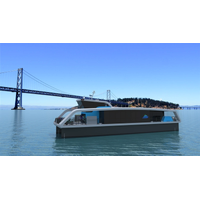
San Francisco Bay Ferry Awarded $11 Million Grant for Electric Vessel
San Francisco Bay Ferry has been awarded a $11 million grant from the U.S. Department of Transportation’s Federal Transit Administration (FTA) to support the agency’s plans to procure the nation’s first high-speed battery electric ferries.The award—announced by the FTA on Monday as one of 18 new ferry grants totaling nearly $300 million—advances Phase 1 of SF Bay Ferry’s Rapid Electric Emission-Free Ferry (REEF) Program, a suite of projects to transition the agency’s fleet to zero-emission propulsion technology.
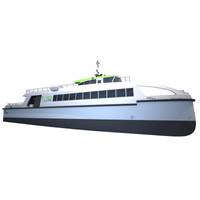
BMT and Greenline Marine Roll Out New Electric Ferry Design
Naval architecture and marine engineering firm BMT announced it has teamed up with Canadian ferry transportation company Greenline Marine to develop a new all-electric ferry design.The new 32-meter Greenline 150 Passenger Electric Ferry is equipped with the latest in electric propulsion technology and features an optimized hull form and propulsion system, with hull, propellers and rudders engineered to reduce the energy required for movement. This focus on efficiency directly…
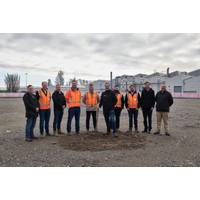
HamiltonJet Breaks Ground on New Production Facility
Works began today on a new state-of-the-art production facility for capacity expansion for HamiltonJet, the New Zealand manufacturer of marine propulsion technology. This morning’s groundbreaking ceremony was held on site in Lunns Road, Christchurch.HamiltonJet has over 70 years of experience designing and manufacturing waterjet propulsion systems. It was founded in the 1950s by Sir William Hamilton - who pioneered the first commercial waterjet - and the company remains a market leader of waterjets and vessel controls.The new plant…
CIMAC Congress: Call for Papers Launched
More than 700 experts from all over the world attended over 200 presentations given during the CIMAC Congress in 2023. Now, the call for papers for the CIMAC Congress 2025 to take place from May 19-23, 2025, in Zurich has been launched. The organizers of this 31st CIMAC World Congress invite everyone to submit proposals in the fields of power, drives, and propulsion technology.The topic streams are “digitalization”, “towards net zero”, “engine optimization & retrofits”, “basic research and advanced engineering” and “operators perspective”.
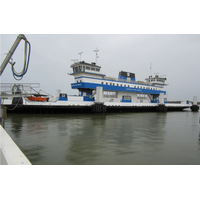
Texas DOT Christens New Ferry Esperanza 'Hope' Andrade
On Friday, March 8, the Texas Department of Transportation (TxDOT) christened its new ferry in Galveston Bay.Named for the first female chair of the TxDOT and first Latina Secretary of State, Esperanza “Hope” Andrade, the vessel was designed by the The Shearer Group and built by Gulf Island Fabricators in Louisiana.Stretching 293 feet, the double-ended ferry showcases cutting-edge propulsion technology and pioneering battery energy storage systems.The ferry is outfitted with diesel-powered and electrical engines and Siemens Energy’s BlueDrive PLUSC power and propulsion system…
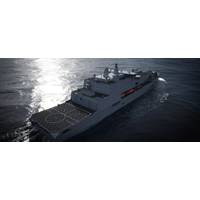
GE Vernova to Equip UK FSS Ships with Hybrid-electric Propulsion
GE Vernova's Power Conversion business in the UK has been chosen by Team Resolute to supply advanced hybrid propulsion technology for three Fleet Solid Support (FSS) ships for the UK Ministry of Defense (MOD).Team Resolute is a consortium created by Spanish shipbuilder and defense company Navantia, shipbuilder Harland & Wolff and naval architects BMT to deliver the FSS program, for which Navantia UK, the UK subsidiary of Navantia, is prime contractor.The 216-meter-long ships for the Royal Fleet Auxiliary (RFA) will be designed with an emphasis on minimizing carbon emissions.

Sea Forrest's Marine Battery System Earns BV Approval
Sea Forrest (SF), a provider of specialist marine electric propulsion and energy management solutions, has been awarded type approval from Bureau Veritas (BV) for its SEAGEN 11 modularized marine propulsion battery module system.SEAGEN 11 is the first marinized lithium-ion battery system for marine propulsion to be designed, built and assembled in Singapore. Together with the battery management system, which was also designed, built and programmed in Singapore in collaboration with GenPlus Pte Ltd…
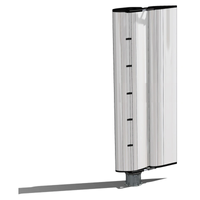
GT Green Technologies Working Toward BV AIP for Its AirWing
GT Green Technologies, a developer of wind-based green solutions for the maritime sector, is working with classification society Bureau Veritas toward the goal of earning an approval in principle (AIP) for its AirWing wind propulsion technology.The AIP from Bureau Veritas will be an important step forward for the design of the AirWing20 system, which harnesses the power of wind to help vessels reduce emissions and fuel burn.The system has also been awarded funding by the U.K.
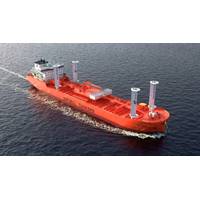
Odfjell to Install Suction Sails on a Chemical Tanker
Odfjell announced it will install bound4blue's eSAIL wind-assisted propulsion technology system on a chemical tanker, making it the first tanker vessel in the world to harness this groundbreaking technology.bound4blue’s eSAIL system utilizes a wind-assisted propulsion system known as a suction sail to reduce fuel consumption and emissions."Since 2020, we have been studying sail technologies as a potential energy efficiency measure for our fleet, and we are excited to now take the next step by partnering with bound4blue to implement their pioneering eSAIL system on one of our chemical tankers…
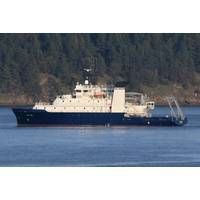
Greening the U.S. Federal Fleet
The international shipping industry as a whole is responsible for 2% to 3% of global greenhouse gas emissions, and if nothing changes, those will increase by 250% by 2050, according to the International Maritime Organization (IMO). Sobering numbers like these have made reducing emissions across the sector a focus for governments, shipbuilders, environmentalists, vessel owners and technology suppliers alike.The United States federal ship fleet, excluding combat ships, consists of various types of vessels utilized for civilian purposes. This fleet of vessels makes the U.S.
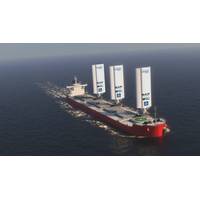
WindWings Gains Type Approval Design Certificate
BAR Technologies (BARTech) announced it has been awarded a full type approval design certificate (TADC) for its wind propulsion technology from classification society DNV.Since being awarded an approval in principle (AIP) for its WindWings wind propulsion solution in 2021, inventor and designer BARTech, and industrialization partner Yara Marine Technologies (YMT), have focused on progressing the WindWings design through to the next level of DNV certification. This has involved validating WindWings design compliance with full detail on construction…
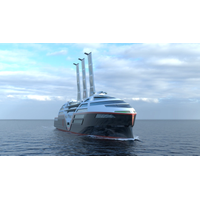
Hurtigruten Unveils Zero-Emission Cruise Ship
Cruise operator Hurtigruten Norway has unveiled early concept plans for its first zero-emission ship.Initially announced in March 2022, under project name ‘Sea Zero,’ the ship is being touted as "the world’s most energy-efficient cruise ship". Tasked with developing energy-efficient and carbon-neutral technology solutions, Hurtigruten Norway and its consortium of 12 maritime partners and research institute SINTEF shared key findings following its first year of research."When we initially announced the ‘Sea Zero’ project over a year ago…
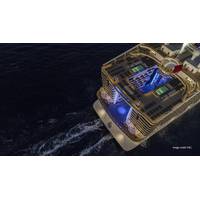
MSC’s World Europa Equipped with GE Propulsion
GE Power Conversion was chosen by shipbuilder Chantiers de l’Atlantique to supply electric propulsion for the first two of the World Class vessels, MSC Cruises’ latest class of ships. The first ship, MSC World Europa, is now in operation at sea, and the second vessel is currently in build.The LNG dual-fuel vessels are propelled by the most powerful cruise ship electrical motors in operation - two 25 MW, 120-127.5 rpm induction motors - which are fed by four press-pack IGBT (insulated gate bipolar transistor) PWM MV7000 converters.
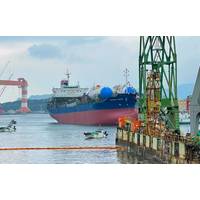
LNG Dual-fuel Chemical Tanker Launched for Fairfield
Japan's Fukuoka Shipbuilding has launched a new chemical tanker for U.S. based shipping company Fairfield Chemical Carriers (FCC).The newly built Fairchem Pioneer is FCC's first liquefied natural gas (LNG) dual-fuel stainless steel chemical tanker. According to FCC, the vessel's LNG propulsion technology reduces carbon dioxide emissions by up to 25% compared to traditional marine fuels.The ship is the first of two 26,300-dwt chemical tankers FCC ordered from Fukuoka Shipbuilding, with options for four additional vessels.
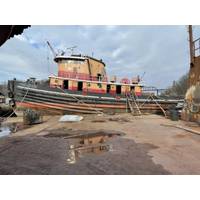
Ammonia-powered Tug Conversion Underway
A first-of-its-kind ammonia-powered, zero-emission tugboat will be put to the test by Brooklyn, N.Y-based startup Amogy in late 2023.Having already successfully demonstrated its technology on an aerial drone, tractor and semi-truck, the ammonia power solutions company revealed in early March that it is retrofitting a scaled up 1-megawatt (MW) version of its ammonia-to-power system onto a tug at Feeney Shipyard in Kingston, N.Y. as a test run for its emissions-slashing power and propulsion technology in the commercial maritime sector.Once installed…
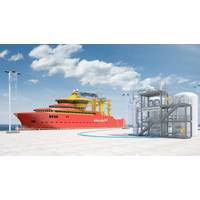
Zero-emission Maritime Operations: Ship-aH2oy Project Gets EU Funding
Horizon Europe, the EU's key funding program for research and innovation, will fund the Ship-aH2oy project aimed at developing and demonstrating a zero-emission propulsion technology on board ships using green hydrogen from liquid organic hydrogen carriers (LOHC) on a megawatt scale. The European Climate Infrastructure and Environment Executive Agency (CINEA) has informed the consortium of 17 partners that they will be granted 15 million euros, with the project period being five years).
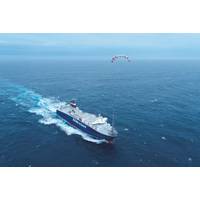
Wind Propulsion: Kite System Trialed on Transatlantic Voyage
An innovative kite system is being put through its paces on board a cargo ship crossing the Atlantic as wind propulsion takes off for commercial shipping as a means to reduce fuel burn and harmful environmental emissions.The system, called Seawing, has been developed by France-based Airseas, and is currently being trialed on the 154-meter ro-ro vessel Ville de Bordeaux, which is operated by Louis Dreyfus Armateurs (LDA) and chartered by Airbus, Airseas' minority shareholder and launch customer.As the ship transports aircraft components between Europe and the United States…
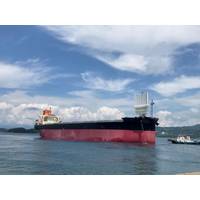
Wind-powered Cargo Capacity Surpasses One Million DWT
The latest installations of wind propulsion technology on large commercial vessels have tipped the amount of cargo that can be transported on vessels that make use of wind as a renewable energy source over the one million tonnes of deadweight (DWT) milestone.The timing of wind-powered ship propulsion passing this pivotal milestone comes in the same week that the industry celebrates World Maritime Day and its theme "New Technologies for Greener Shipping".In recent years, there has been a resurgence of interest in equipping vessels to harness the power of the wind.

